Ten-year-old Erik will be a mechanic when he grows up, but in the meantime, he’s putting his practical skills to the test by reviving half-forgotten traditional recipes. With seven of his classmates, he regularly bakes and cooks in the home economics classroom, practicing for the main event: preparing a traditional regional lunch for over 200 of his peers at the primary school in Dobje, a small municipality in the rural east of Slovenia.
Though the country is smaller than New Jersey, it boasts 24 distinct culinary regions, reflecting a complex history at the intersection of southern, central and eastern Europe. However, much of this regional culinary heritage is all but forgotten, due to the strong influence of Viennese, Italian and Balkan cuisines. “When you ask someone about traditional Slovene dishes, they can maybe think of five, tops,” says Anka Peljhan, who started project Kuhnapato (roughly translated as “kitchen and all that”) 14 years ago.
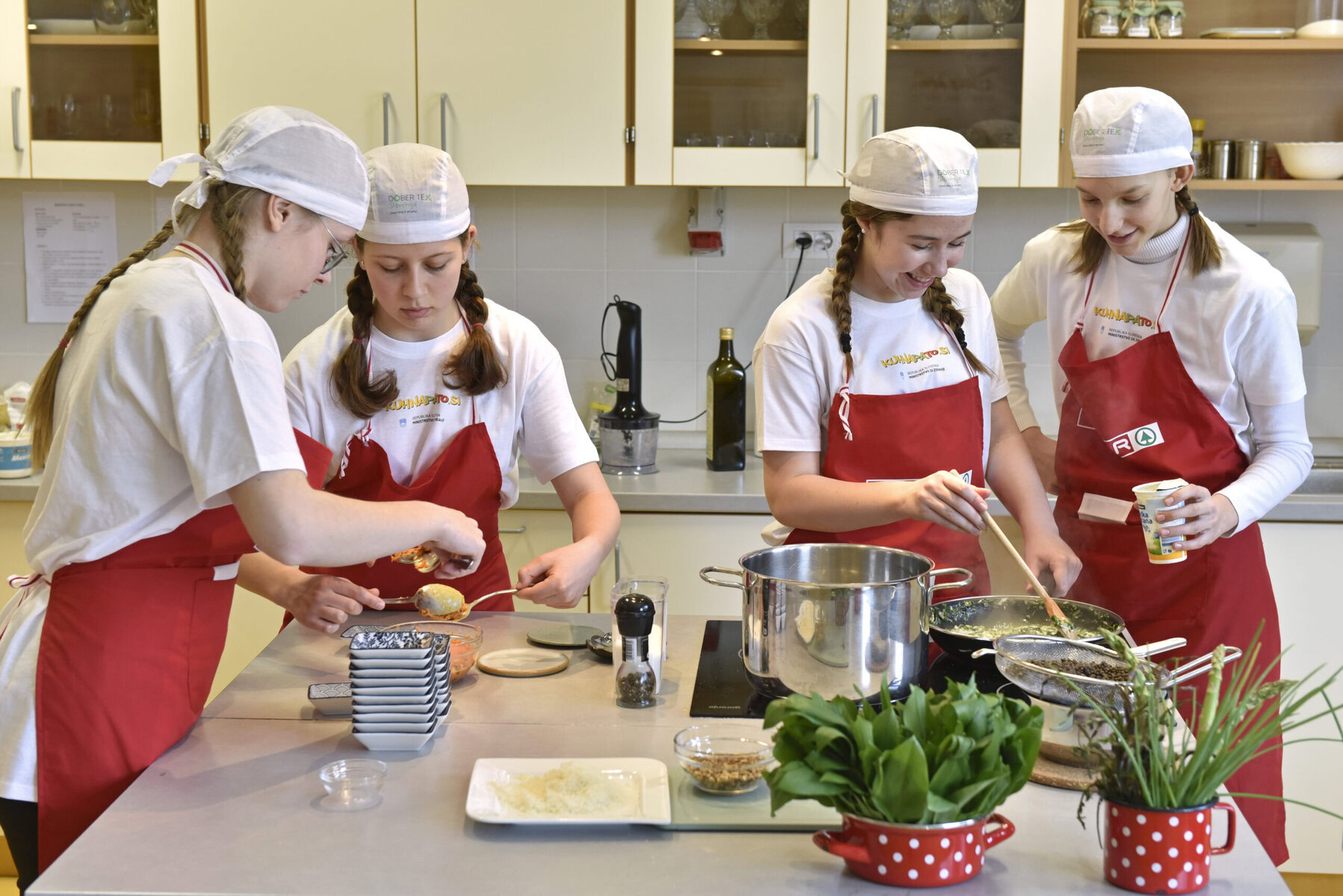
The project’s premise is deceptively simple: Children in participating schools cook traditional regional meals for their peers throughout the school year. This seemingly quaint idea touches on a pressing issue: Global food trade has more than doubled since 1995, and the global food system now accounts for 30 percent of the world’s emissions. Beyond their cultural importance, traditional recipes are time capsules from a time when food was considered a valued and often scarce local resource, not a globally traded commodity. Home cooks depended on local and seasonal ingredients, wasting food was close to sacrilege, and meat was only eaten on Sundays, if at all. Accordingly, almost all of the recipes used in the project are vegetarian, and all use local, seasonal produce, often sourced from local farmers.
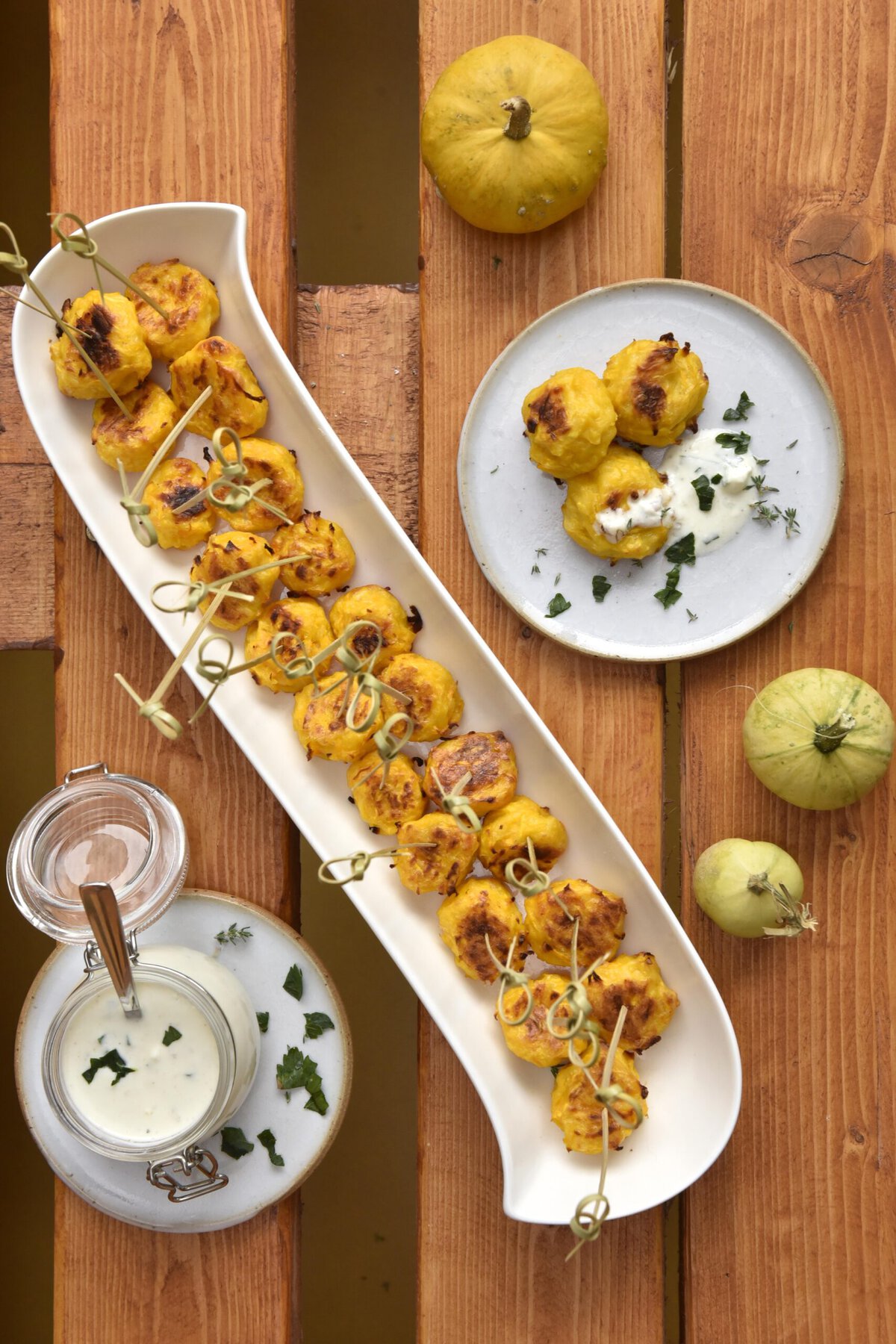
In Slovenia, many of these regional recipes are only recorded in the handwritten notes and memories of older relatives, so children are encouraged to ask around in their community for ideas and advice. With the teacher’s help, the fifth-graders in Dobje choose a recipe appropriate for the season and their skill level: Today, it’s soup with handmade noodles and roasted walnuts. Then they don their red aprons and white hats and troop into the school kitchen, quickly dividing the tasks among themselves and getting to work. They’re already good friends with the kitchen cooks, who are on hand if help is needed — but it rarely is. “I really didn’t expect how much children in this age group can already do, it came as a complete surprise. They’re incredibly handy and resourceful,” says Mateja Pintar, the kids’ teacher.
“It’s interesting to cook, and we can joke around while we’re doing it,” says 10-year-old Zarja, Erik’s classmate and fellow cook. “And it’s nice to explain to everyone what you’ve cooked when it’s something they don’t even know and they’re totally excited!” Eleven-year-old Ana agrees: “It’s nice when we get compliments.” She has also started cooking at home under her mom’s supervision. “I learned some recipes that are very simple and tasty,” Ana says, “but my parents don’t even know them.”
In this way, the project’s impact reverberates through the kids’ social networks: to their peers, who are excited to try the sort of healthy fare they would usually balk at, the parents who buy more local seasonal food at their children’s request, the grandparents who have the opportunity to share their handwritten family cookbooks and knowledge of local herbs and mushrooms with their grandchildren.
This was always the idea, explains Peljhan. She wants everyone to relearn the importance of cooking seasonal, regional food, but after launching a recipe website and holding workshops in schools, she soon realized that school-aged children would be her most receptive and effective messengers. “Learning is not a one-way street, it goes in all directions. The kids teach their parents, but they also teach the school cooks, because they bring in new recipes and think about making them better, modern, more appealing. You don’t have to cook a vegetable soup for two hours, for example,” says Peljhan. She launched the project in 2011 in the form of annual regional cooking competitions, and started working directly with primary schools in 2016, funded by the Ministry of Health and the food retail chain SPAR. This year, 196 primary schools are participating in the project, either directly or through regional Centers for School and Outdoor Education, with a total of 7,900 children currently participating. Over 40,000 children have taken part in the project since 2016, an impressive number for a country of only two million inhabitants.
Weighed down by negative news?
Our smart, bright, weekly newsletter is the uplift you’ve been looking for.For teachers, the project offers an opportunity to give their students life skills that go beyond chopping vegetables and boiling potatoes. “The kids are connected, they know how to organize themselves, how to work in a group, how to communicate and accept each other’s opinions … this is also showing in other areas,” says Pintar. She’s been participating in the project for over 10 years, and some of her students have gone on to train as chefs. “I love how willing they are to try new foods. The others see them and it spreads quickly,” she says. “But for me the most important part is that we’re reviving recipes that would otherwise be forgotten. Now they know them, and they’re passing them on.”
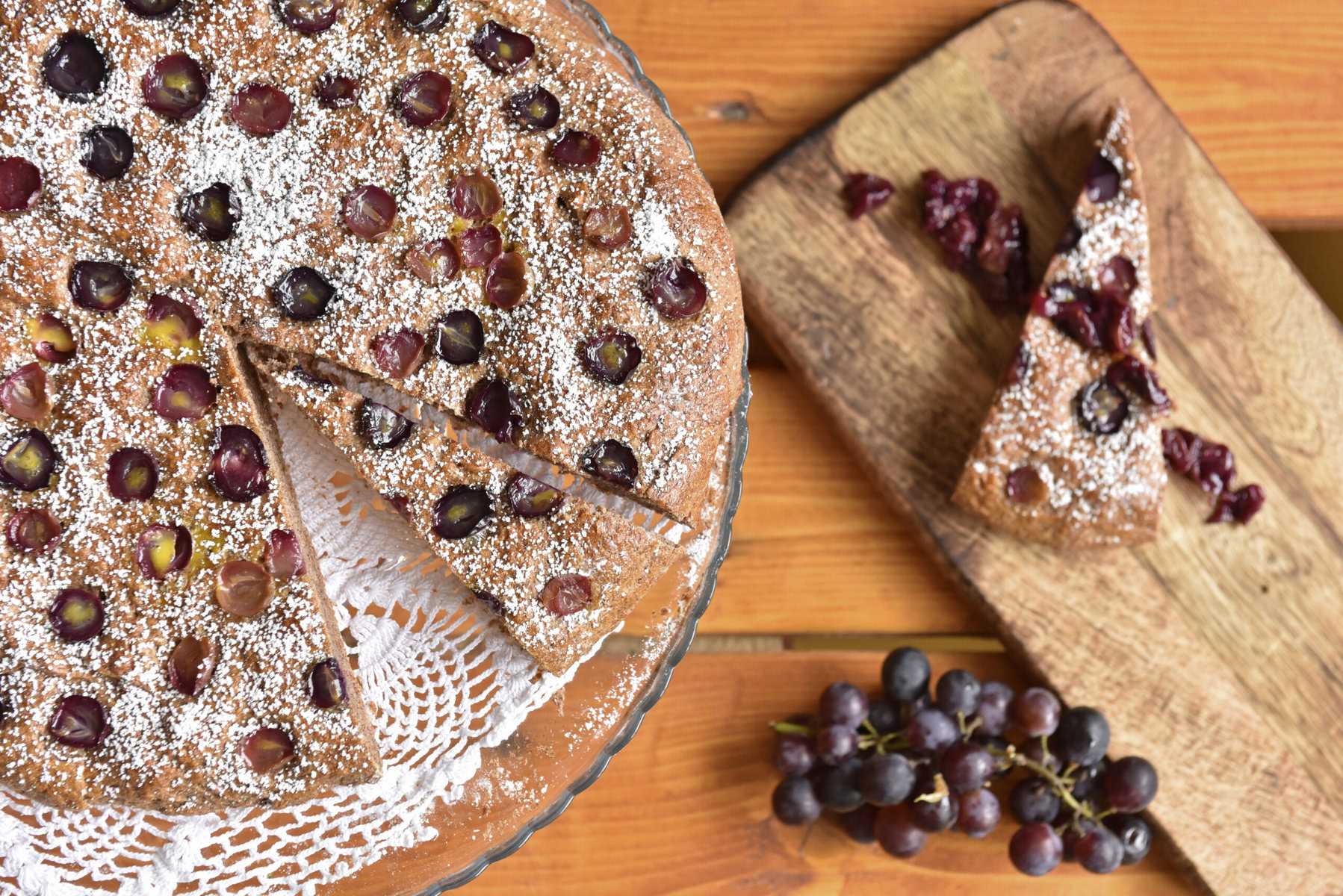
Each year Peljhan gathers some of the recipes in a cookbook, and an English-language version has been produced by the Government Communication Office. Children participating in Kuhnapato have cooked at Slovene diplomatic events in Washington, London and Brussels, as well as at state functions in Slovenia. Despite all this, Peljhan still wishes there were more ongoing support for the project: “Everyone’s happy to jump on the bandwagon for a photo op or a marketing product, but there hasn’t been any interest in more cooperation from the various ministries. This year we’re drastically underfunded again, because the numbers stay the same while all the prices have gone up.”
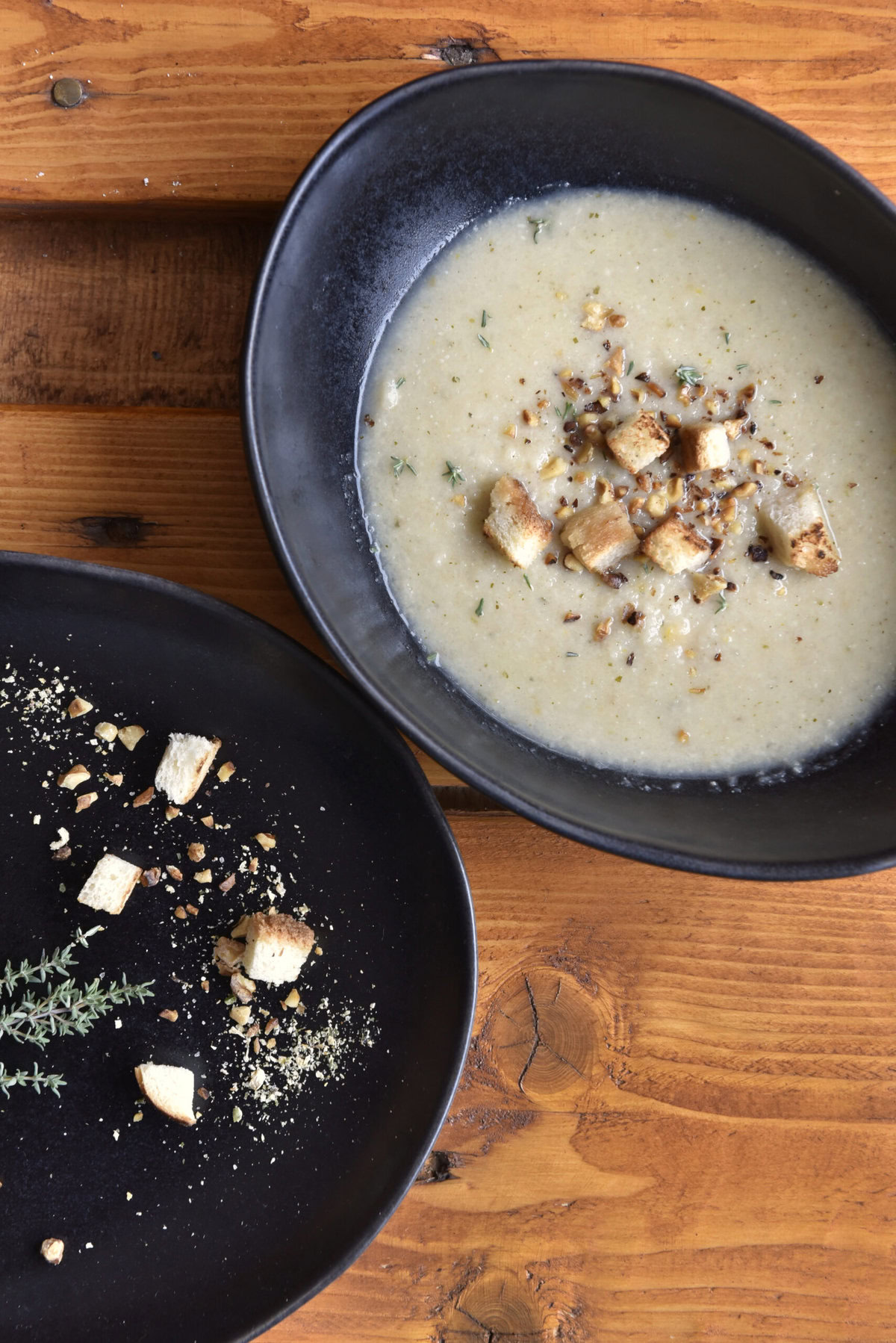
She would also like to help other countries replicate the project. A number of initiatives across Europe have identified school lunches as an important lever in changing attitudes towards food and improving the school system’s environmental impact, but limit themselves to specific areas, like teaching children to cook, training school cooks to create healthy, sustainable meals and creating food procurement systems that prioritize regional and seasonal ingredients. Kuhnapato combines these with cultural education and intergenerational communication, while remaining flexible enough to fit seamlessly into different contexts.
The project’s guiding principle — schoolchildren cooking healthy traditional meals for their peers — takes many different forms, depending on the school’s resources and the students’ needs. At Danila Kumar International School, a public school in Ljubljana with pupils from over 30 nationalities, students don’t prepare lunch for the entire school — with over 1,000 mouths to feed that would be impossible — but instead cook smaller meals in their home economics classroom. There’s a wide range of attitudes towards cooking and food among the international students who join the project, so teacher Katarina Čepič focuses on basic cooking skills. “I also teach them about the shelf life of various foods, so they know what produce can still be used past its prime, that dairy products are good to eat as long as our senses tell us so,” she says. “They always go around the classrooms to collect leftover fruit to cook with, so we don’t create waste.” She takes the kids foraging for dandelion greens and wild garlic — a popular Slovene pastime in spring — and teaches them how to reuse leftovers in new recipes. “They learn to respect food because it is a living thing, not just something you buy and then throw away,” says Čepič.
The impact of food waste goes beyond home economics: In 2022, over one billion tons of food were wasted globally, generating 8 to 10 percent of global emissions, which is almost five times as much as the aviation sector. As part of Kuhnapato, children learn about the many traditional recipes that rely on yesterday’s leftovers, turning potatoes into gnocchi and bread into dumplings, as well as how to use cutoffs, peels and seeds whenever possible. There is also less plate waste: “Kids are simply excited to try what their classmates have cooked; they eat everything and lick the plate,” says Peljhan. Participating schools have also started cooperating directly with local farmers and producers to source local ingredients for the project, creating short supply chains that further reduce waste and transportation emissions, all while ensuring that the food is still fresh and nutritious when it reaches the plate.
Kuhnapato’s core values have trickled into the schools’ general lunch menus as children’s expectations and tastes changed. Many schools reduced the amount of sugar used, while a couple have completely eliminated wheat flour, replacing it with traditional alternatives like rye, buckwheat and corn. The use of vegetables has almost doubled since 2013, while deep-fried foods were eliminated completely — a development that can be attributed to Kuhnapato, along with other initiatives promoting healthy eating in public institutions. Some schools even started actively involving their pupils in their meal-planning process.
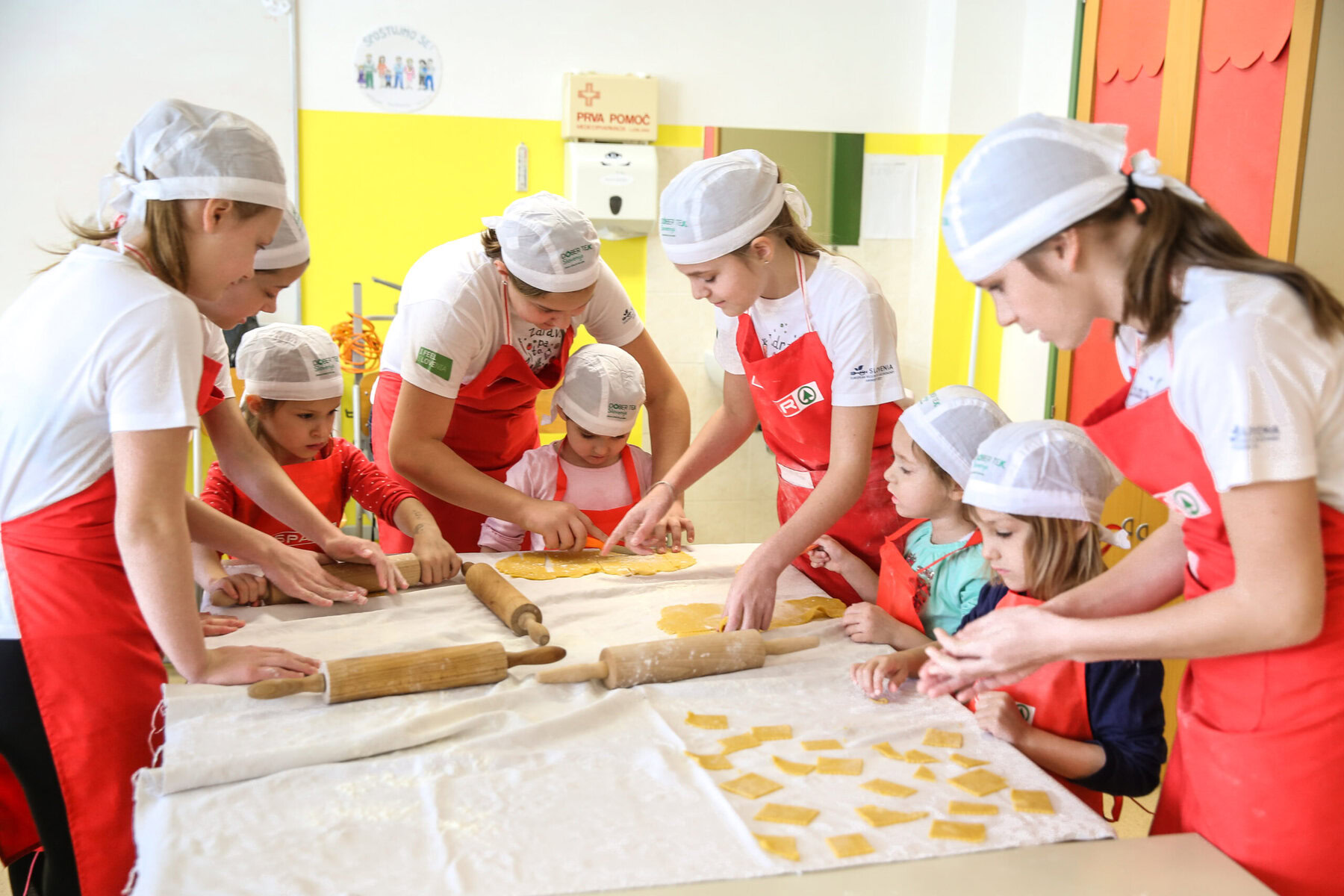
The fifth-graders from Dobje don’t care much about the project’s lofty goals — they just like cooking and spending time together in the kitchen, and even better if they get to use the large industrial dishwasher at the end. Erik, the future mechanic, has made a reluctant truce with brussels sprouts, but still likes pastries better. The students want to keep cooking together until they graduate in four years’ time, but word’s gotten out and Pintar’s fourth-graders are already looking forward to taking over the school kitchen next year. “I guess I’ll have to expand the project!” she laughs.



